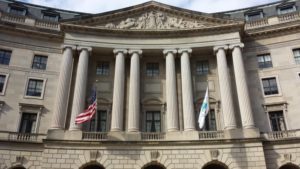“Returning the EPA to its core mission” of “protecting the health of Americans and the environment” has been one of EPA Administrator Scott Pruitt’s most common refrains. That nonspecific statement has now been fleshed out with a new report with 42 recommendations on improving the Superfund program and an accompanying memo from Pruitt directing that 11 of those recommendations be undertaken immediately.

“My goal as Administrator is to restore the Superfund program to its rightful place at the center of the Agency’s core mission,” Pruitt states in the memo.
Some of the items on Pruitt’s top-10 list are intended to expeditiously shrink the National Priorities List (NPL), which names the most serious uncontrolled or abandoned hazardous waste sites in the United States.
Task Force Given 30 Days
In a statement at the beginning of the report, Pruitt notes that when he took over as administrator, he was “astounded to learn that there were over 1,330 sites” on the NPL. On May 22, 2017, Pruitt commissioned a Superfund Task Force comprising leaders from EPA’s Office of Land and Emergency Management, Office of Enforcement and Compliance Assurance, Office of General Counsel, EPA Region 3 (as the lead region for the Superfund program), and other offices. The task force was given 30 days to “provide recommendations on an expedited timeframe on how the agency can restructure the cleanup process, realign incentives of all involved parties to promote expeditious remediation, reduce the burden on cooperating parties, incentivize parties to remediate sites, encourage private investment in cleanups and sites and promote the revitalization of properties across the country.”
A Good Beginning
According to the report, the 42 recommendations can be undertaken without legislative changes to the Comprehensive Environmental Response, Compensation, and Liability Act (CERCLA or Superfund) in the next year.
“The report does not represent all potential actions that may be needed in the future,” states the task force. “Rather, it represents a good beginning that will lead to program efficiencies and identify areas for further refining. Importantly, such refinement will be the subject of close stakeholder engagement as we seek to strengthen our partnerships with all those involved in the Superfund process.”
Listed first among the recommendations is establishment of an “Administrator’s Top 10,” that is, sites that have seemingly taken far too long to remediate, which will get Pruitt’s weekly attention.
Voluntary Actions and Enforcement
Pruitt’s memo directs the Agency’s assistant administrators, regional administrators, and other top officials to implement the 11 recommendations “right away.” The actions include:
- Prioritize and take action to expeditiously effectuate control over any site where the risk of human exposure is not fully controlled.
- Utilize early or interim response actions, including removal authority or interim remedies, more frequently, as appropriate, to address immediate risks, prevent source migration, and return portions of sites to reuse while more detailed evaluations of other portions are ongoing.
- Identify potential pilot contaminated sediment or complex groundwater sites where adaptive management strategies can be implemented.
- Focus training, tools, and resources on current NPL sites with the most reuse potential.
- Work with potentially responsible parties (PRPs); state, tribal, and local governments; and real estate professionals to identify opportunities for PRP-lead cleanups to consider future reuse in cleanups.
- Encourage PRPs to work with end users to voluntarily perform assessment and additional cleanup or enhancement work to achieve reuse objectives and fund or perform enhanced cleanup or betterment by voluntarily entering into agreements with end users.
- Use enforcement authorities, including unilateral orders to recalcitrant PRPs, more actively to discourage protracted negotiations over response actions.
- Maximize deletions and partial deletions of sites that meet CERCLA and National Contingency Plan requirements.
Doing More with Less
Reactions to the memo included questions about how Pruitt intended to pick up Superfund activity given the administration’s commitment to reduce EPA’s funding and staff. To these frequently asked questions, Pruitt has repeatedly responded that improved management can more than compensate for lowered funding.
In addition, some stakeholders are concerned that the administrator’s desire to remove sites from the NPL quickly may result in premature removals.
“Scott Pruitt’s plan to streamline the Superfund process in favor of cutting costs will lead to incomplete cleanups of contaminated neighborhoods, as demonstrated in the past at sites like MDI in Houston’s 5th Ward,” Rosanne Barone, the Houston program director for Texas Campaign for the Environment, said in a statement. “Painted as a quick way to boost economic development, Pruitt’s recommendations are more akin to a fast track to injustice.”
